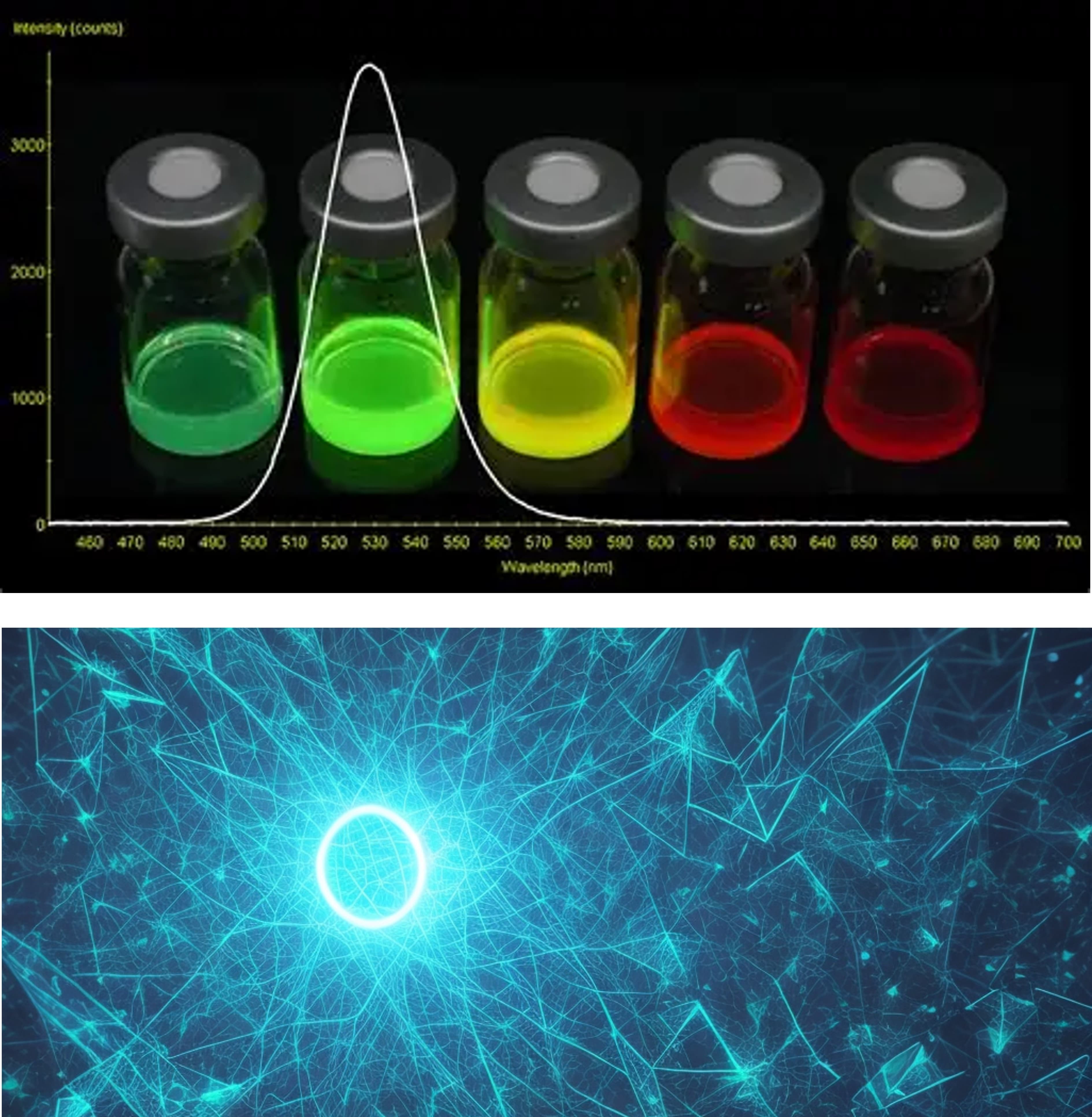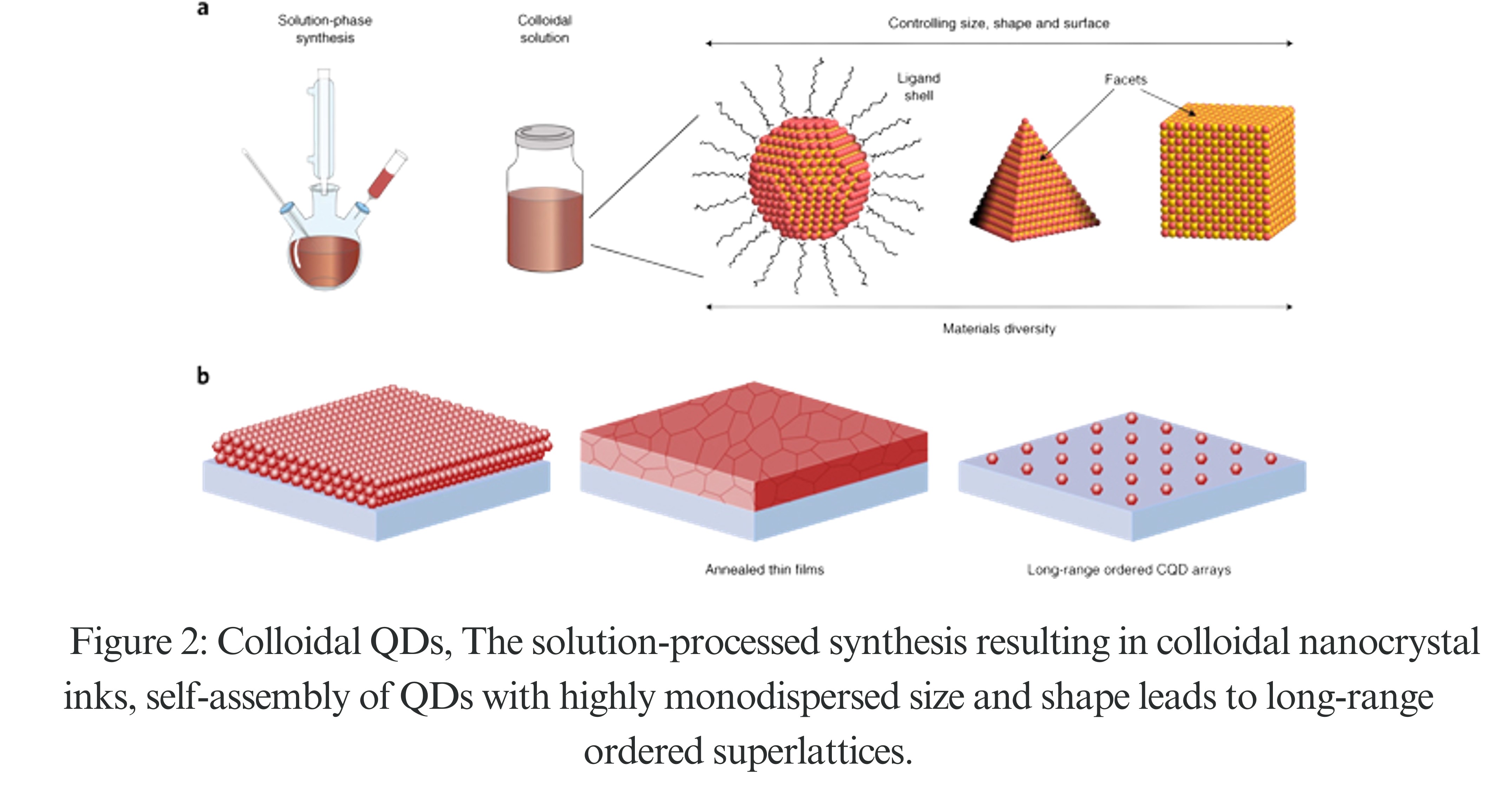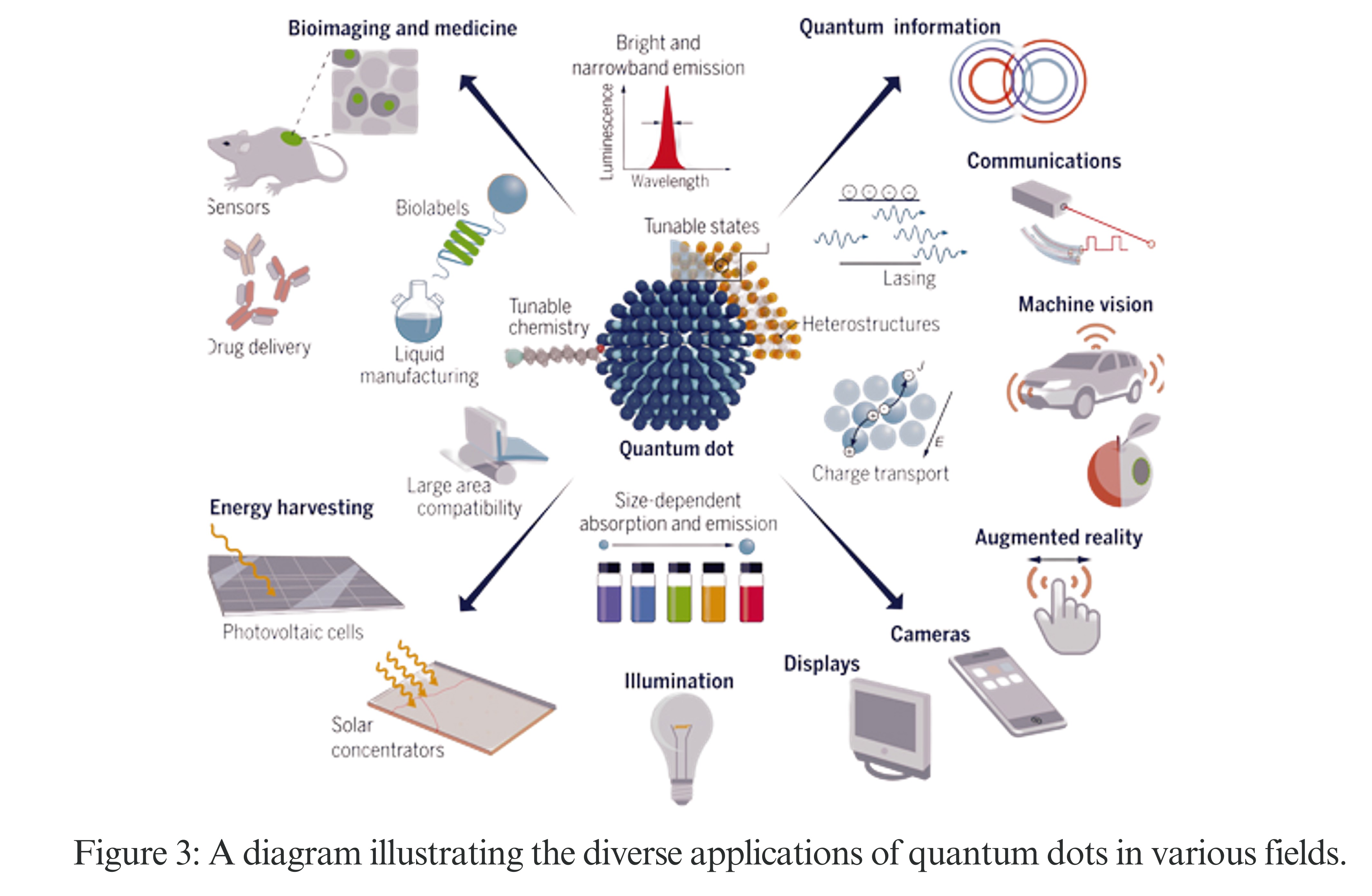
Quantum dots are semiconductor particles just a few nanometers in diameter. At this scale, electrons and "holes" (the absence of an electron) are confined, leading to a phenomenon known as the quantum confinement effect. This effect means that the energy levels within the dot become discrete, much like those in an individual atom. Due to this, quantum dots are sometimes called "artificial atoms."

This unique size-dependent property allows for remarkable control over their optical and electronic behavior. A smaller quantum dot will emit higher-energy light, which appears as a blue color. Conversely, a larger dot will emit lower-energy light, which we perceive as red. This ability to tune the color of emitted light by simply changing the dot's size, without altering the material itself, is a cornerstone of their utility.
The synthesis of quantum dots (QDs) is a fascinating process that allows us to create materials with extraordinary properties. The most widely used method is colloidal synthesis, a remarkable chemical approach where precursors are mixed in a solution and heated. This process is carefully controlled, as temperature and reaction time dictate the final size of the quantum dots, thereby tuning their color and electronic behavior.

Beyond colloidal synthesis, other advanced techniques are also employed to create these tiny marvels. Molecular beam epitaxy and self-assembly offer more sophisticated ways to grow quantum dots with incredible precision, often on a substrate for use in more complex electronic devices. Each method represents a different avenue for innovation, pushing the boundaries of what is possible in materials science and nanotechnology.
The applications of quantum dots are vast and continuously expanding. In consumer electronics, they have already transformed television and display technology, giving rise to "QLED" screens. These displays use quantum dots to produce more vibrant, pure, and accurate colors than traditional LCDs, creating a breathtaking visual experience.

Beyond displays, quantum dots are making significant strides in other fields by leveraging their unique mechanisms. In bio-imaging, their high luminescence and tuneable colors allow for the precise tagging and tracking of biomolecules. For solar cells, a single high-energy photon can generate multiple electron-hole pairs, a process known as multiple exciton generation, which significantly boosts efficiency beyond traditional limits.
Their discrete energy states also hold great promise for quantum computing as potential qubits, the fundamental unit of quantum information.

The journey into the quantum world is just beginning. Every scientist, engineer, and researcher stands at the precipice of a new era of innovation. Pushing the boundaries of what's possible with these tiny particles will unlock incredible breakthroughs across medicine, energy, and information technology. The future is waiting to be shaped by those with the curiosity and determination to explore the unknown.